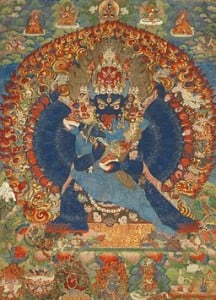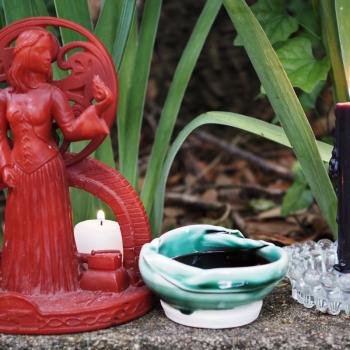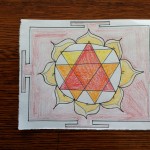Dual observance is a theme at my blog. I practice Traditional Witchcraft and Hinduism on the left-hand Tantric side of things. The following guest post is written by Willow Moon. I am honored to have such a wise teacher share his experience here.
Willow Moon has had a long and abiding interest in traditional Witchcraft since the 70’s which led him to be initiated and trained in a number of Witchcraft traditions. In the early 80’s he met his first primary Tibetan Buddhist teacher. He started learning Buddhist practice and Tibetan language by engaging in week long mediation retreats and daily puja. Since that time he has continued to study both magic and meditation on a daily basis and in longer retreats. He is active in teaching Faerie Witchcraft.
I’ll be posting this in three parts over the next three Fridays. I hope you enjoy it!
*****
I am an initiate and practitioner of both Tibetan Buddhism and Faerie Witchcraft. One may think they are such different religions that it is strange that one person would practice both. Other than both being classified as “heathen,” “pagan,” or as “misguided” or “wrong” by arrogant people who are ignorant of their beauty, truths and benefits – there is much that is either similar or complementary in each path.
Of course, since I am only one person, I cannot speak for every Buddhist or Faerie (Feri) Witch. I can only speak about my personal experiences arising from my practice and the personal instructions that I have received from my Buddhist teachers and Faerie elders such as Victor and Cora Anderson.
Both religions are intrinsically complementary because neither nurtures a sense of competition with other religions or Gods. Because there is no competition there is no need to proselytize or to argue and convince others of the superiority of one’s choice for religious worship. In fact, both of these religions encourage cooperation with others based on respect.
Both Faerie Witches and Buddhists demonstrate a respect towards all living creatures. In Buddhism, animals are considered to be equal to humans in the sense that both have an inherent Buddha nature. It is possible for animals to become enlightened by connecting to their original Buddha nature which is pure and unobstructed in the same way that it is possible for the Gods. Buddhists consider that a human birth is preferable to both animal or God because it is easier for a human to connect to their Buddha nature due to their unique mixture of both suffering and pleasure. Humans in general have enough suffering to stimulate them to better themselves and their world but also enough pleasure to encourage them to continue.
It is harder for animals to recognize their Buddha nature because they generally experience too much suffering and are often held in slavery to humans. It is thus difficult for them to relax and let go of their fear for long enough to sense their true nature and develop it. The Gods have a difficult time attaining complete freedom because they have too much pleasure and thus too little motivation to strive to uncover their original mind. Since all animals and humans are considered equal by virtue of their Buddha nature, Buddhists tend to be kind and loving toward animals and humans alike. Faerie Witches have no rules that tell us how we are supposed to treat animals, however it is part of our culture to love and respect animals as equal to humans, since humans are animals. We have no cultural imperative to dominate and control those who are different than us. In fact, anyone abusing an animal would be considered less than humane and one likely to abuse other humans as well.

Faerie Witches often consider the biological law of conservation of energy to be a basis for understanding reincarnation. This natural law states that energy cannot be created or destroyed, it can only change form and function. Thus all forms of life are interchangeable. Witches are usually taught that those who die move into a place of rest and peace often considered being in the western direction to be later reincarnated into the land as a plant or animal or human. This is similar to the “Buddhafield of Great Bliss” or Dewachen which is Buddha Amitabha’s pure land of the dead that is located in the west where they rest and learn before reincarnation.
Both Buddhists and Faerie Witches generally agree that science is both beneficial and dangerous. To Faeries, science is often seen as proving the truth of our ways and lore. Faerie Witches, like Pagans in general, tend to enjoy the progress in understanding and benefiting our world that science affords us. For instance, the knowledge that the sun is the creator of our world has been proven by science, just as the Pagans of old believed. Buddhist teachings have a lot in common with the theories of modern quantum physics and biology. Particularly in regard to the fluidity and plastic nature of matter and the body/mind that is changed by our actions, thoughts and feelings. However, most Buddhists and Witches also agree that science has the ability to change our world into a genetic nightmare filled with pollution and weapons. Science is only beneficial when it encourages the continuity of life and respect for individual dignity, just as businesses and politicians should.
(Check back next Friday for part two!)















